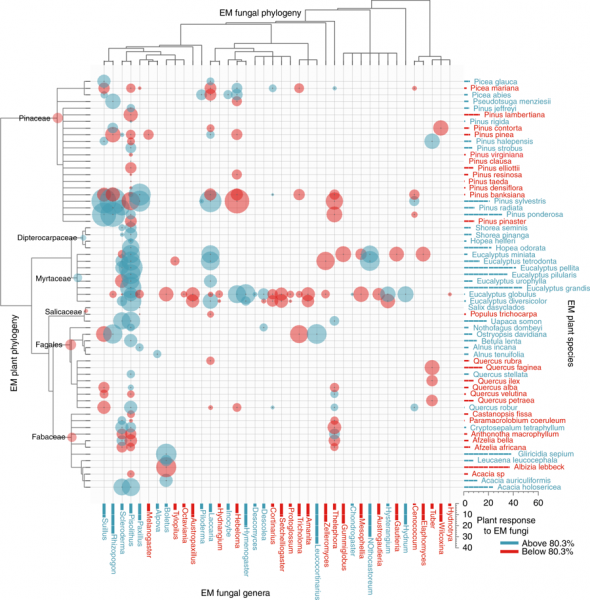 APRIL 24, 2019
APRIL 24, 2019
Biology professors Jason Hoeksema and Peter Zee, along with 19 other co-authors from five countries (including former Biology post-doc Megan Rua and former Biology PhD student Bridget Piculell) recently published a paper in the journal Communications Biology that resulted from a 15-year collaboration. The group was trying to understand why plants sometimes derive big benefits from associating with root-inhabiting mycorrhizal fungi, and sometimes do not (even occasionally suffering parasitism from those fungi). They analyzed results from more than 400 previously published papers and found that much of the answer lies in evolutionary history, with some of the original evolutionary origins of mycorrhizal symbiosis (e.g., in the bean family) leading to much less beneficial relationships with plants compared to others. In addition, evolution has led to specificity in plant benefits, whereby particular groups of plants benefit much more from being paired with particular groups of fungi. These results not only enhance our basic understanding of the variable benefits derived by plants from their relationships with soil microbes like these fungi, but may also aid in choosing which fungi to inoculate on plant roots for forestry, agriculture, horticulture, and restoration purposes. Read more about the history of the group’s research collaboration in this blog post by Dr. Hoeksema.